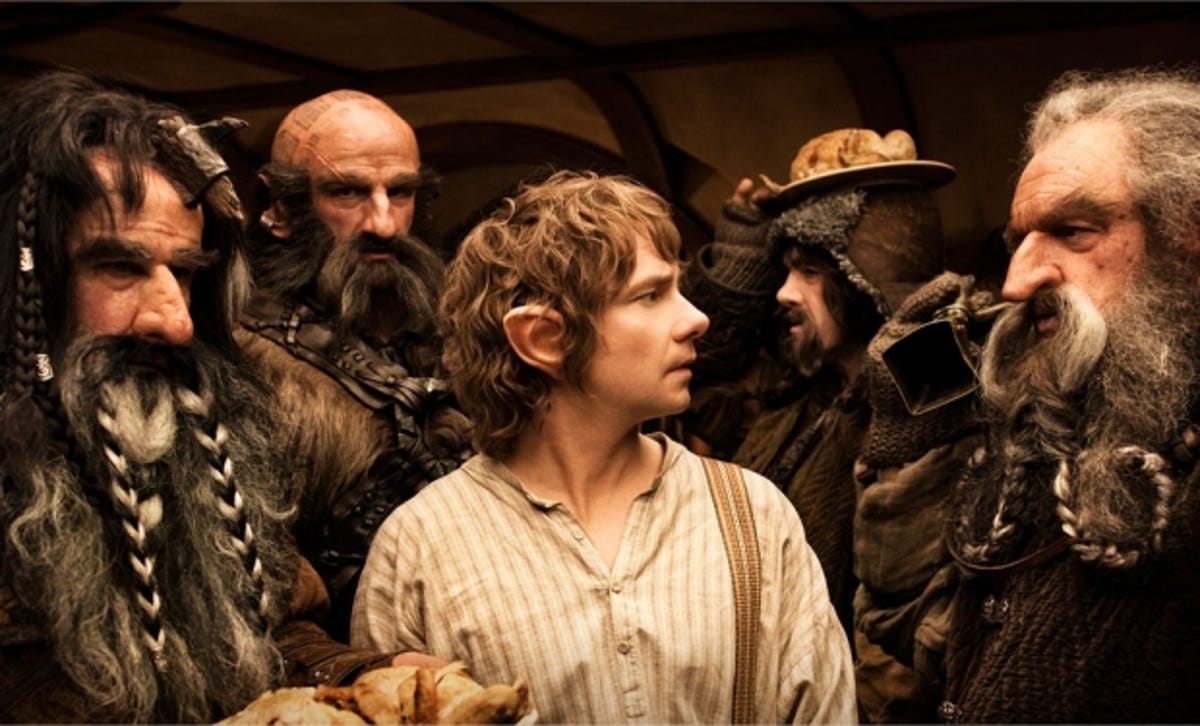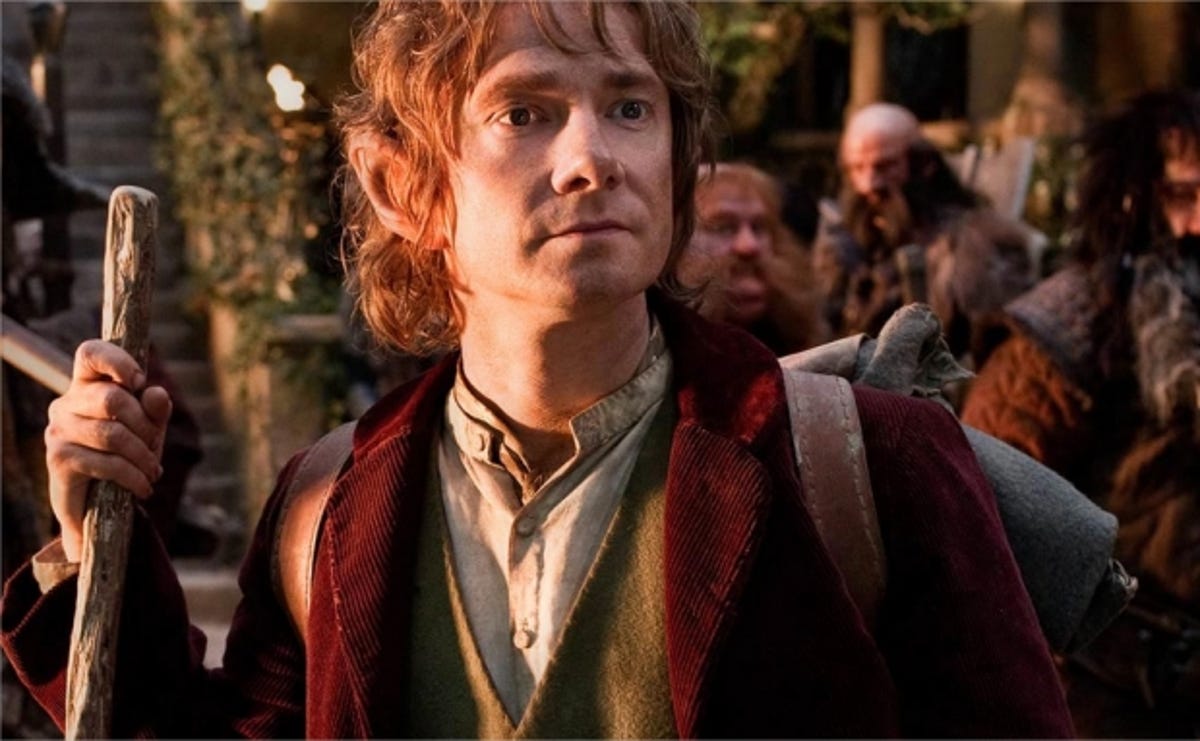
The Hobbit: An Unexpected Journey, which opens in the UK on Thursday, is shot in 3D at 48 frames per second — twice the rate of normal movies. You can see it in 2D, 3D and in certain cinemas at the full 3D High Frame Rate (HFR). But what difference does it make? What does it look like?
It’s very high resolution, and very lifelike, with almost no motion blur. The Hobbit in HFR looks like you’re watching a really expensive ride at somewhere like Universal Studios. It made me wonder why they chose a fantasy production for its big-screen debut. When everything is fake, what’s the point in making it look like a documentary?
When there aren’t special effects happening, it’s so clear and smooth and bright that it’s often like watching a pantomime. This feeling is enhanced by all the hammy British TV actors (Ken Stott, Jimmy Nesbitt, Sylvester McCoy) dressed up in big noses and funny wigs. It’s a curious sensation, and almost worth going to see the film for. Almost.
At two and three quarter hours for this first of three films, The Hobbit reeks of eke. Every scene from the book is drawn out to three times its natural length, and many more added besides. Instead of a character revealing his motives through action, another character will explain his legendary backstory in tedious length over a largely computer-generated flashback. Even poor old Gandalf, a whimsical, enigmatic presence in the book, is made to spell out exactly what he’s thinking.
The dwarves are a cheery bunch — you do at least get a sense of where they’ve been all these years, earning a crust on the roads of Middle Earth, whereas in the book they’re largely mute sketches. Their hair and noses, while ludicrous, aren’t dwelt on, the camera gliding quickly past them.
But does their feast in Bag End, when the dwarves eat Bilbo out of hearth and hole, have to last half an hour? Does there need to be a song while they do the washing up? Do they need to throw crockery at the screen to remind you that you’re watching a 3D movie? I did like their mournful song about gold, but only because it reminded me of Terry Pratchett.


As befits a children’s story, the action is completely bloodless, even when limbs and monstrous CGI heads are hacked off. There are no jumps or scares, but the fighting might be a bit much for very little ones. There are a few fun chases, including one through the goblin mines that reminded me of Temple of Doom, but otherwise excitement is very thin on the ground.
Everything’s very thin on the ground. The Hobbit is a slim adventure story, in which Bilbo learns there’s rather more to him than anyone had suspected, and Thorin, the dwarf king, learns that friendship is more valuable than any jewel. That’s fine for 200 pages, but over nearly 9 hours it’s going to get very tedious indeed. It already has, in fact.
Easily the best bit is when Gollum and Bilbo test each other’s wits in a game of riddles. Andy Serkis is still compellingly crazy as the pitiful slimy wretch, and for once Martin Freeman has the space to breathe some life into Bilbo. It’s the only scene I wanted to last longer.
The Hobbit then is a sad, boring, mercenary project. Why is it in three parts? Three times as many cinema tickets to be sold. Why is it in 3D? Extra money to be made on glasses. Why is it in HFR? To make that 3D more tolerable — it’s very smooth and bright, at least. Why is it unbearably long? There you’ve got me. You’d think they’d want to squeeze in more showings per day.
Perhaps it’s so the Blu-ray will be more of a value proposition for parents — shove the kids in front of that and they’ll be quiet for nearly three hours. Except they won’t. They’ll be fidgeting and moaning after half an hour, because all anyone’s done is sit in a kitchen and eat.




